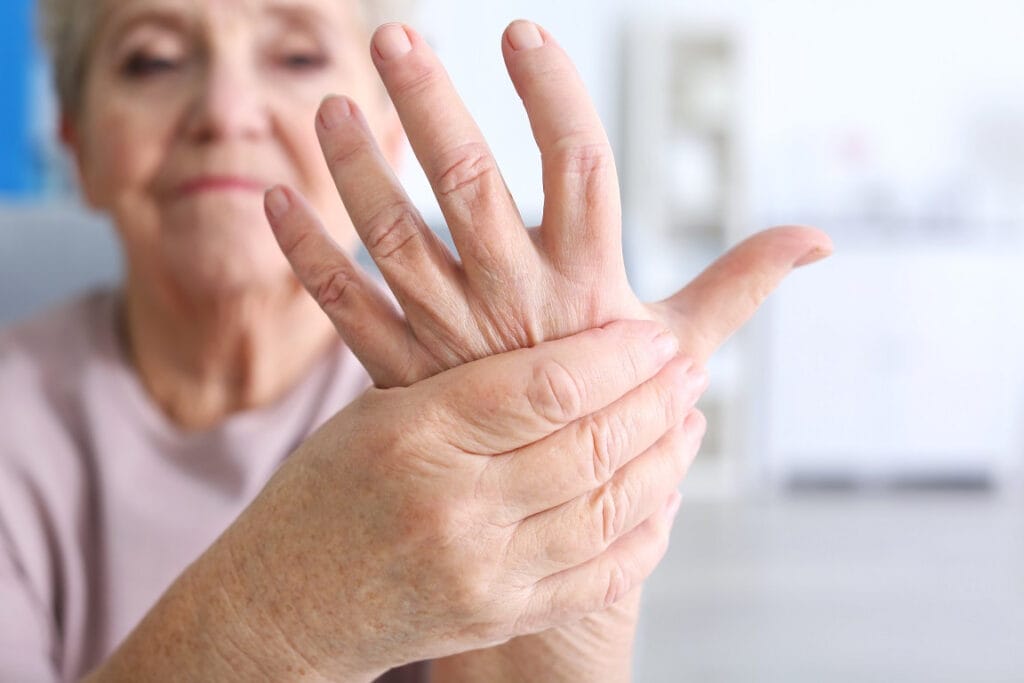Managing Arthritis in Older Adults: Tips for Caregivers
By Perfect Care Match · 6 min read · Senior Wellness

Arthritis is one of the most common—and misunderstood—sources of chronic pain in older adults. While it can limit movement and independence, proactive management makes a significant difference in comfort, function, and emotional well-being.
In fact, 88% of people with osteoarthritis in the U.S. are over age 45, and it remains the leading cause of disability nationwide. As a caregiver, understanding the condition and knowing how to support seniors with arthritis can help preserve both physical ability and emotional resilience.
Key Takeaways
-
Understand the Condition
Arthritis is not a single disease but a group of over 100 conditions—most commonly osteoarthritis (OA)—that affect joints and surrounding tissue. -
Watch for Warning Signs
Joint pain, stiffness (especially in the morning), swelling, and a grinding sensation are all common symptoms. -
Stay Active, Safely
Movement is essential. Low-impact activity like walking, chair yoga, and stretching improves mobility and mood. -
Support Daily Comfort
Tools like braces, heat/ice therapy, and gentle massage relieve symptoms without medications. -
Use Food as Medicine
An anti-inflammatory diet can complement arthritis treatment and reduce overall discomfort.
What is Arthritis?
Arthritis refers to inflammation of the joints, most commonly affecting the hands, knees, hips, spine, and feet. Of the 100+ types of arthritis including gout, rheumatoid arthritis (RA), and psoriatic arthritis, osteoarthritis (OA) is the most prevalent among seniors. OA is a degenerative disease in which the cartilage cushioning the bones wears down over time, causing pain, stiffness, and decreased mobility.
Some people remain asymptomatic, while others may experience “bone-on-bone” pain that interferes with everyday function. The physical limitations often carry emotional weight, increasing the risk of isolation, depression, and even dangerous falls.
Warning Signs and Risk Factors
Arthritis can progress slowly, so it’s important to watch for early signs.
Symptoms may include:
Joint stiffness, especially in the morning or after inactivity
A grinding or crunching feeling during movement
Swelling or tenderness in or around the joints
Decreased range of motion or difficulty completing routine tasks
Common Risk Factors:
Age and genetic predisposition
Female gender
Previous joint injuries or overuse
Being overweight
Inactivity or sedentary lifestyle
Coexisting health conditions like diabetes or autoimmune disease
Left untreated, arthritis can lead to limited mobility, reduced independence, and increased fall risk—especially in older adults.
How Arthritis is Diagnosed
If you suspect arthritis in a loved one, early evaluation is key. Here’s what to expect:
Initial Evaluation
A primary care provider (PCP) will review symptoms and perform a physical exam to assess joint movement, strength, and tenderness.Medical History Review
Family history, prior injuries, and current medications are reviewed to rule out other conditions.Diagnostic Testing
Your doctor may order:X-rays to identify cartilage loss or bone spurs
Bloodwork to screen for autoimmune forms of arthritis like RA
Referral to a Specialist
If needed, your PCP may refer your loved one to a rheumatologist for advanced testing or treatment planning.
Medical Approaches to Pain Management
There is no cure for arthritis, but multiple treatments can ease pain and maintain function. Common options include:
Over-the-counter meds: Acetaminophen, ibuprofen, naproxen
Supplements: Glucosamine and chondroitin for joint support
Prescription NSAIDs: Meloxicam, indomethacin
Steroids: Either oral or injected directly into the joint
Opioids: Tramadol, hydrocodone (used with caution)
Cannabinoids: Some seniors report pain relief with CBD or cannabis
Caregivers should help ensure medications are taken exactly as prescribed. Monitor for side effects and avoid mixing over-the-counter pain relievers without medical guidance.
Non-Medication Therapies That Work
In many cases, drug-free options can offer lasting relief—especially when combined with medical treatment. Consider:
Physical therapy to improve strength and mobility
Chair yoga or aquatic exercise for low-impact movement
Massage, acupuncture, or acupressure for targeted relief
Heat and ice therapy (alternate every 20 minutes for best effect)
Braces, splints, or assistive devices like walkers to reduce joint strain
Seniors should avoid long periods of sitting. Even a brief walk or stretch each hour can reduce stiffness and lift mood.
The Role of Diet in Reducing Inflammation
Beyond weight management, diet plays a powerful role in managing arthritis symptoms. Many foods naturally fight inflammation and support joint health.
Top Anti-Inflammatory Foods:
Fatty fish (like salmon and sardines): High in omega-3s
Leafy greens (like spinach and kale): Packed with antioxidants and vitamins
Berries (blueberries, strawberries): Help reduce oxidative stress
Turmeric & ginger: Natural anti-inflammatory spices
Olive oil: A healthier fat that reduces joint inflammation
Nuts & seeds (especially walnuts and flaxseed): Contain joint-friendly fatty acids
Whole grains (quinoa, oats): Lower inflammatory markers compared to refined carbs
Foods to Limit: Fried foods, processed meats, refined sugars, and anything with trans fats can increase inflammation and worsen symptoms.
For best results, consult with a registered dietitian to develop a sustainable anti-inflammatory eating plan tailored to your loved one’s needs.
Why Movement is Essential
Arthritis can make movement feel daunting—but inactivity is often what causes the most harm. Without regular motion, joints become stiff, muscles weaken, and the risk of injury climbs. Seniors who maintain even a modest level of activity often experience better sleep, stronger appetites, improved mood, and a stronger sense of independence.
Encourage your loved one to try simple routines like morning stretches, five-minute hallway walks, or chair yoga. For those with more advanced limitations, physical therapists can offer guidance on safe movements and suggest braces or mobility aids to help reduce pressure on joints.
Remember: movement doesn’t have to be strenuous—it just has to be consistent.
Final Thoughts for Caregivers
Caring for someone with arthritis means more than managing pain. It’s about preserving dignity, encouraging self-worth, and helping your loved one stay engaged in life. Arthritis can be frustrating and unpredictable, but with the right support—medical, emotional, and practical—many older adults can continue to live safely and comfortably at home.
Check in regularly about pain levels, mood, and daily struggles. Advocate for treatment changes when needed. And above all, celebrate the wins—no matter how small. Because every step forward, even a literal one, is a victory worth acknowledging.
